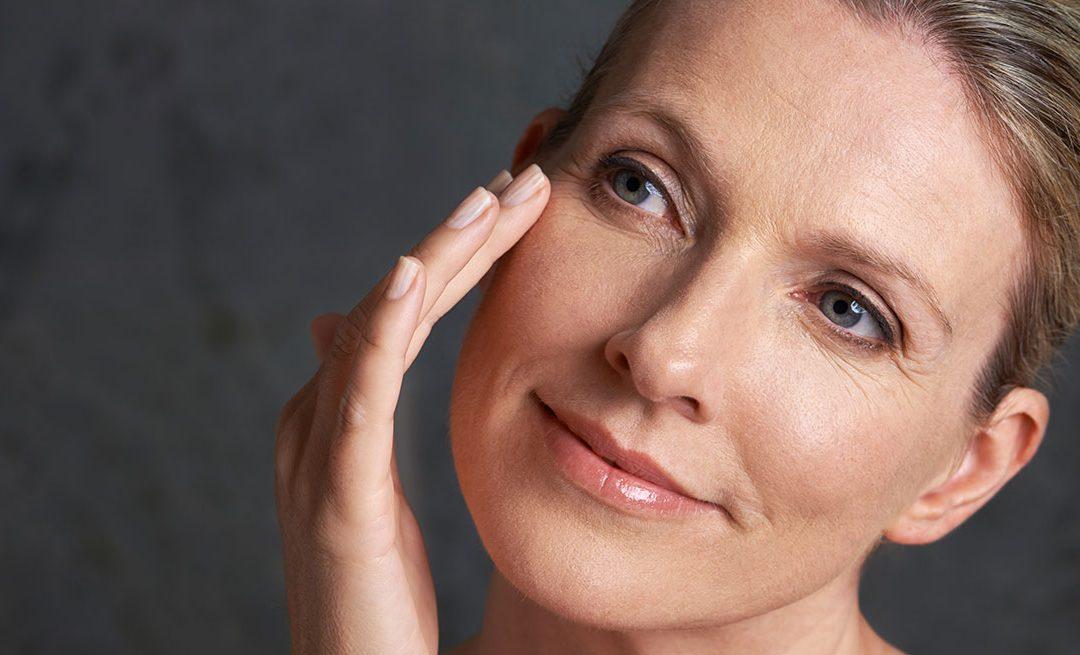Guide to taking care of the skin from the age of 50
By Ana Gandara
To begin with, if you still have doubts about whether there really is (or should be) a change in habits or cosmetics after the 50s barrier, instead of continuing with the routine that you had at 40 and that you surely already incorporated antiaging elements, Marta Barrero, pharmacist, dermocosmetic expert and co-founder of The Secret Lab, confirms that yes, needs change and you have to adapt to them. "The main 'problems' are derived from the hormonal drop typical of menopause: the skin practically no longer synthesizes collagen and what was there is gradually lost. This gives rise to the appearance and intensification of wrinkles, flaccidity and, above all, everything, loss of skin density, since the skin thins out in the dermis, as if it were being emptied.However, the epidermis thickens due to the slowdown in cell renewal, flexibility and muscle tone are lost.In addition, with the drop in estrogens, the skin begins to dry out and lose luminosity and it is also an age in which solar lentigines [spots] usually appear," explains the specialist.
Faced with this string of things that can be frightening at first, there are certain cosmetic ingredients and treatments that have proven to have very good results in combating the signs of aging, which is why Marta Barrero gives us the keys to incorporate into our lives all the necessary elements to a perfect antiaging routine.
The new goal of your skin

Basically, the point is that the purpose for which you perform a beauty routine also varies. If at 20 your main goal was, perhaps, to combat excess sebum or prevent the appearance of acne, now "the most important thing is to adapt the formulations to maintain a good hydrolipidic balance, while we continue feeding it to make it work as maximum possible", explains the expert. How is this achieved? Pay attention to the next point.
The new essentials of your beauty routine
At 50 years old, it is more than likely that you already have an established beauty routine (sooner or later you end up learning that it is impossible to have beautiful and well-cared skin without it). existence of certain habits), and without a doubt the steps will not change much -cleansing, serum or hydration should always be present- but the ingredients will not be exactly the same. "We should incorporate more lipid formulations, but keeping those 'foods' that help to synthesize collagen and elastin (vitamin C and retinol), because they work as the 'cushion' of our skin", explains Barrero.
The holy grail of antiaging ingredients
The specialist stresses that among the ingredients that cannot be missing from your routine after 50 are vitamin C, retinol and growth factors "for stimulate collagen synthesis and work on wrinkles, as well as loss of firmness and volume". But also, add other keys that will not be superfluous in the formulation of your cosmetics either, and that range from the use of sunscreen (you will never be saved from that) to others such as "firming peptides, nutritious active ingredients such as vitamin E, shea butter or omegas (to hydrate the face well and prevent lipid loss", as well as alpha hydroxy acids to help renew your skin and DMAE [also known as deanol], which is the firming agent par excellence", he explains.
Cosmetics that are never superfluous
Don't worry, if you're not even sure what peptides are or how you can use retinol, Marta Barrero gives us the key in the form of cosmetics that usually incorporate this type of compounds and, therefore, are the most recommended to introduce them into your routine. "Nutritive night creams that provide lipids to our skin, a good chemical exfoliant to prevent thickening of the epidermis and, finally, serums that induce collagen synthesis in the dermis are essential." Likewise, there are certain products that are no longer advisable at this age, since, as the expert indicates, "we should avoid very light formulations with a lack of lipids and mechanical exfoliants that scratch the skin."
Some Winning Products
There are many, many anti-aging cosmetics out there, so it can be hard to find the one that best suits your needs. Like everything, there is an important trial-error component, but we asked the expert from The Secret Lab what her recommendations are when it comes to finding this type of product. "In our opinion, the anti-aging firm par excellence is Perricone MD. Its formulations are rich in DMAE, vitamin C Ester, acyl glutathione, olive polyphenols, omegas... In other words, they are perfect and especially indicated for working with mature skin. Another firm that we trust to reverse the signs of aging is Neostrata and, specifically, the Dermal Replenish cream from the Skin Active line. Both brands are really effective in improving firmness, luminosity, and fighting wrinkles and blemishes."
And the treatments to improve the results
Although putting ourselves in the hands of the best cosmetics on the market is always a winning choice, there is still something else we can do: bet on specific treatments that improve even more the state of our face. From The Secret Lab they recommend some of the ones that they themselves carry out, although they can be found in many places: "especially protocols with Indiba, since it stimulates the synthesis of collagen, recovers volumes, hydrates, nourishes and illuminates the skin; growth factors ( EGF), which are absolutely nourishing and regenerative; chemical peels to renew the skin, provide luminosity and work on spots; and rollers to induce collagen".









1595